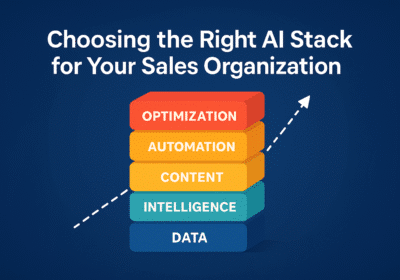Sales leaders today often fall into the trap of using artificial intelligence tools randomly rather than systematically. This sporadic usage is like owning a Swiss Army knife but only using the bottle opener; you miss out on ninety percent of the available value. AI’s real power comes not from isolated tools but from integrating capabilities across every stage of your sales processes. When mapped correctly, AI accelerates every interaction, shortens sales cycles, and makes revenue generation more predictable.
Random AI adoption leads to inconsistent results. Some reps use it effectively, while others revert to manual methods under pressure, resulting in uneven performance. Systematic AI integration, however, compounds improvements across the entire sales cycle. Data captured at one stage strengthens the next, creating a virtuous cycle of sales success that is scalable, measurable, and sustainable. The outcome is not just faster deals, but stronger business acumen and more consistent revenue management.
The ten-stage AI sales process framework provides a structured way to apply AI:
- Prospecting,
- Outreach,
- Qualification,
- Scoping,
- Presentation,
- Economic Buyer meetings,
- Validation Events,
- Proposals,
- Closing,
- Onboarding/expansion.
Each stage leverages AI differently, from intent data analysis in prospecting to AI-driven customer success monitoring post-close. Integration ensures that research informs outreach, discovery guides scoping, and validation improves proposals. By connecting the entire workflow, sales teams gain predictable processes and continuous optimization opportunities.
Process-based implementation builds competitive advantage. Competitors can replicate isolated AI tools, but systematic integration across sales strategies and sales management creates a differentiated approach that scales with growth. Consistency across the team reduces dependency on individual skill differences, enhances messaging, and strengthens value selling.
The measurement framework behind this approach ensures continuous improvement. Stage-specific conversion rates, velocity metrics, and data quality indicators guide refinements. Weekly reviews, monthly AI effectiveness assessments, and quarterly adjustments keep teams aligned while maximizing ROI from AI investments. Over time, these optimizations compound, creating a performance engine that drives long-term revenue generation.
The future of B2B sales isn’t choosing between humans and AI. It’s humans amplified by AI. Let’s build that future together.
If you’d like to explore this topic in more depth, there’s a podcast episode that covers all of this information and more. You can find the link to the episode here and consider subscribing to the podcast AI Tools for Sales Pros on your favorite podcast player.




